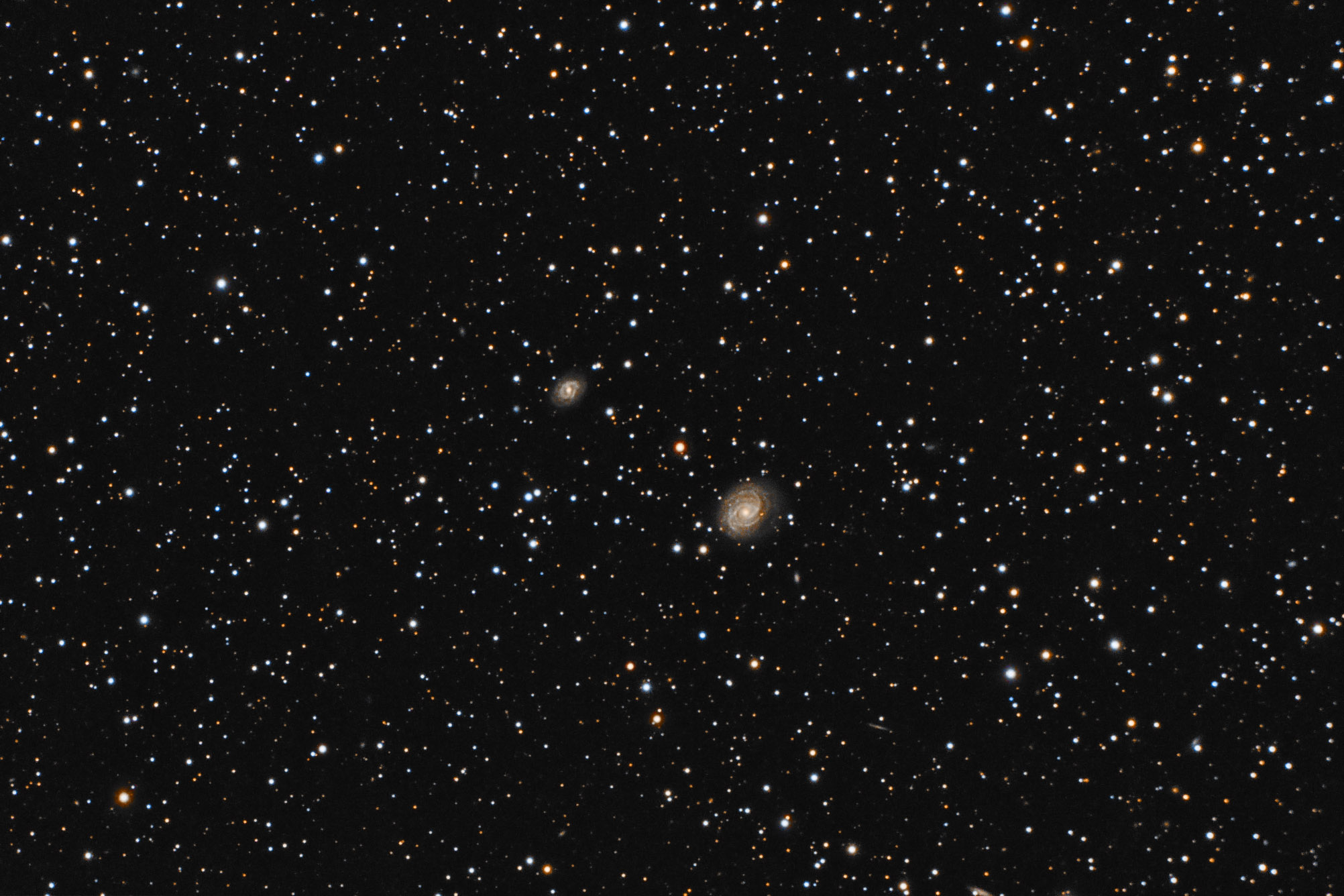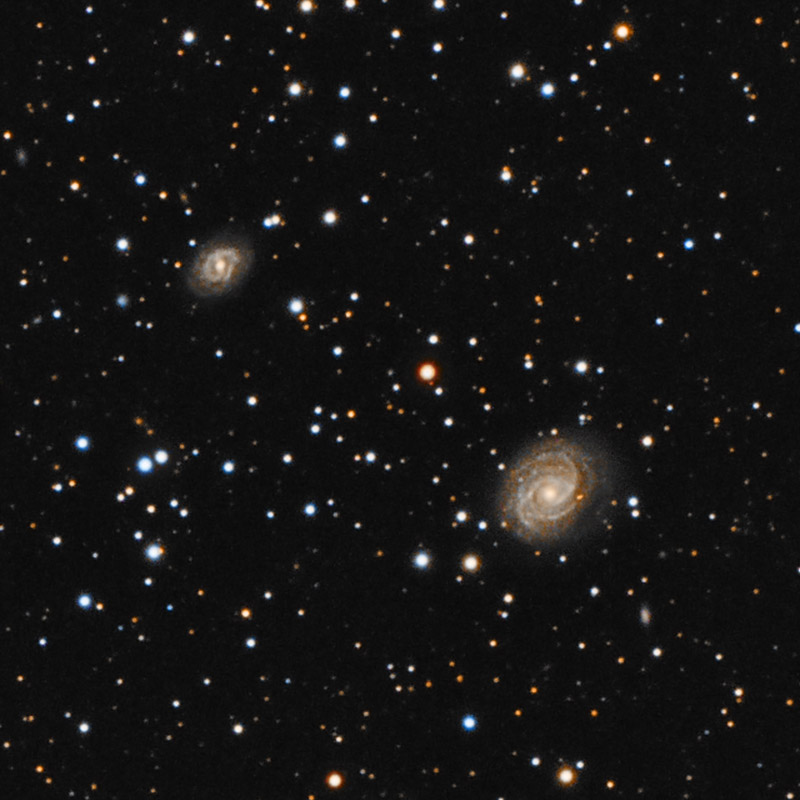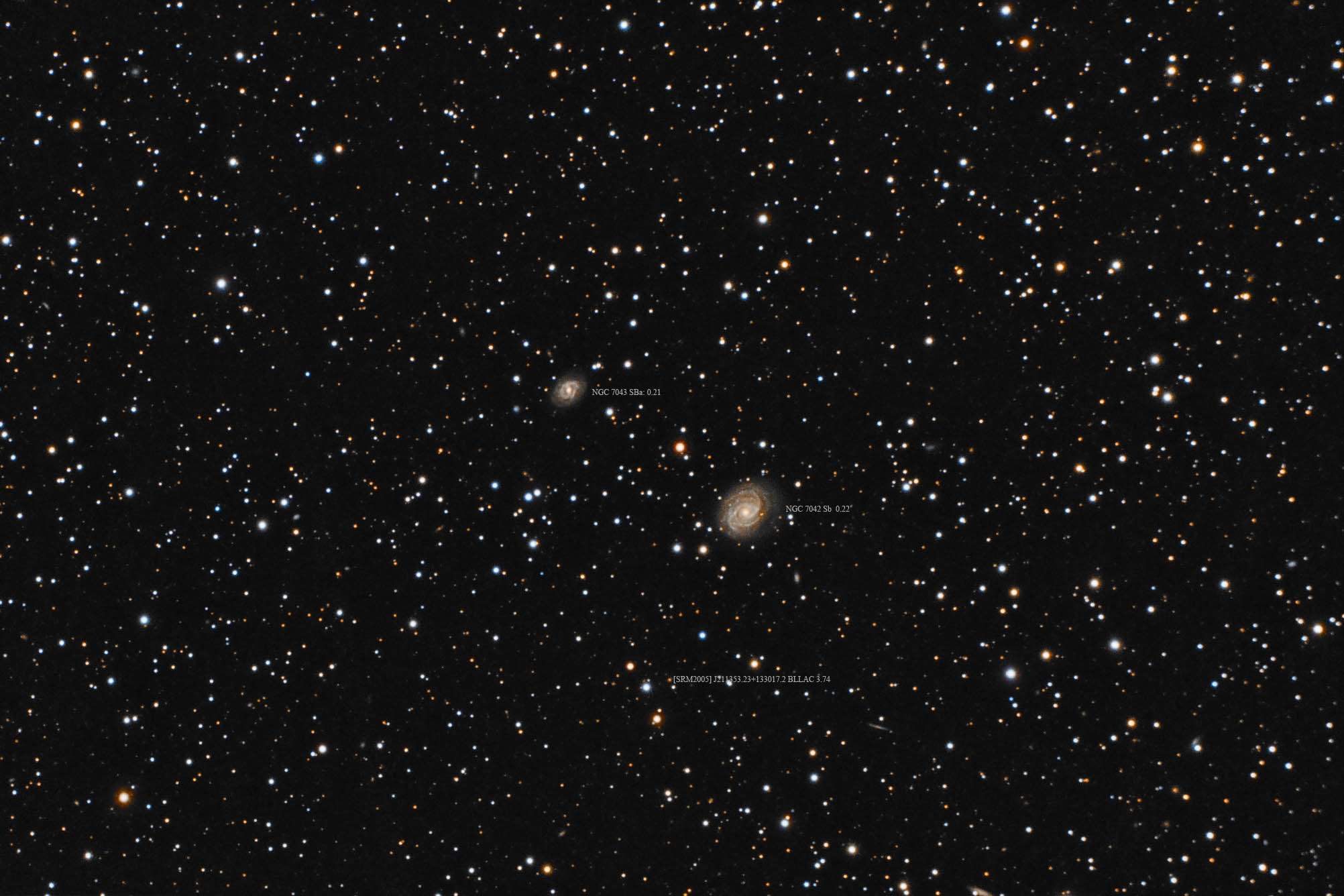| Description | Images |
Object name: NGC7042Designation(s): NGC7042, NGC7043, NGC 7042 and 7043 are a pair of spiral galaxies in southwest Pegasus just above Equuleus and east of Delphinus about 220 million light-years distant. Both are rather strange once you look closely. NGC 7042 while listed simply as Sb by NED and the NGC Project, it is Sb? at Seligman. At first glance, it appears rather normal but look closely. One arm comes off tangentially to the bottom of the core, no other arm comes from the core, they all seem to come from this one arm. First, a second bright arm comes off of it before it has gone very far. A bit further along and a faint arm comes off that stays above the first split off arm to the north but on the east side the two cross. The bright arm ends soon after the crossing after making a sharp left turn. The fainter arm is now much brighter and continues on around to make a near full circle before hitting an orange star. Beyond the star, it continues well past its starting point this time outside of the one arm that started everything but as a rather diffuse arc. The area between arms seems full of very red dust. In short, it is quite weird once you look at it. The galaxy was discovered by William Herschel on October 16, 1784 and is listed in the second Herschel 400 observing program. Related Designation(s):2MASS J21134588+1334298, 2MASS J21140417+1337337, 2MASX J21134584+1334295, 2MASX J21140417+1337337, CGCG 2111.4+1321, CGCG 2111.7+1324, CGCG 426-023, CGCG 426-024, GALEXASC J211404.20+133733.9 , IRAS 21113+1321, IRAS F21113+1322, ISOSS 104, ISOSS J21137+1334, KPG 555A, KPG 555B, LDCE 1453 NED002, LGG 442:[G93] 001, LGG 442:[G93] 002, MCG +02-54-013, MCG +02-54-014, NGC 7042, NGC 7043, NGC7042, NGC7043, NVSS J211345+133428, PGC 066378, PGC 066385, UGC 11702, UGC 11704, USGC U800 NED01, USGC U800 NED02, UZC J211346.0+133429, UZC J211404.2+133734, [SLK2004] 1688, |


